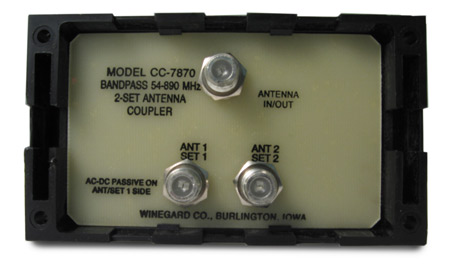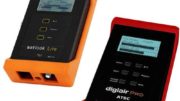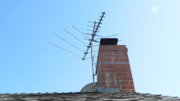Combining two antennas is easy… and you might consider doing it if you have channels in two different directions or want to use a separate VHF and UHF antenna. Combining antennas gives you ultimate flexibility, and if you’re a homeowner, there’s no one to stop you.
It’s actually pretty easy
If you’re combining two of the same kind of antenna, just make sure they’re pointed in totally different directions. Pretty much any antenna splitter can be used “upside down” as a combiner. This Winegard combiner is one of the few that’s actually labeled that way, if that sort of thing is important to you.
Really though, any cheap splitter will do and generally, the cheaper the better. More expensive combiners will have fancy electronics and stuff like that. You don’t need them in most cases. This is one of those rare cases where I tell people, there’s no need to spend more.
The rule you must follow
So, the combiner isn’t really the important thing. That comes as a surprise to a lot of people. But, no matter what you do, there’s one rule that is absolutely key: Make sure the cables from each antenna are exactly the same length. I mean, down to the millimeter if you can do it.
The reason for this rule comes down to physics. If you use cables that are two different lengths and there are any signals that come from both antennas, you’ll have “phase problems” meaning that the combined signal will be a ton worse than the original antenna signal. Essentially it’s like creating audio feedback by pointing a microphone at a speaker (it’s actually a little different but not the point.) It’s easy enough to measure out the cable lengths and make sure they’re the same, and believe me, you’ll be glad you did.
It’s also important, of course, that the cables be identical in other ways. Don’t use two different types of cable. If possible, make two cables from the same reel, using the same connectors. You want all the characteristics to be the same. This is one thing we do on our Xtreme Signal HDB8X antenna. It’s really just two of our HDB4X antennas with an innovative swing arm between them. The cables and combiner that attach the two pieces aren’t anything special. They’re garden-variety, and they don’t need to be anything better. The cables are short and so the loss characteristics aren’t a problem. But, we do make sure those cables are dead-on identical.
A word about combining antennas that have already been combined
I generally don’t like stacking combiners. In other words, if you’re using an antenna that has a built-in combiner, don’t use another combiner to combine it with another antenna. It increases the problems. If you do it even the slightest bit wrong, you’ll have those dreaded phase problems.
Instead, use something like this 8-way splitter/combiner. Honestly any 8-port splitter will work, as long as it’s designed for antennas or cable television. Make as many completely identical cables as you need and connect all the antennas to the same combiner. This is a better way of doing it and it’s more likely to get you the results you want.
And of course, whether you’re shopping for the least expensive combiner or the most expensive piece of broadcast equipment, shop at Solid Signal for everything you need!





